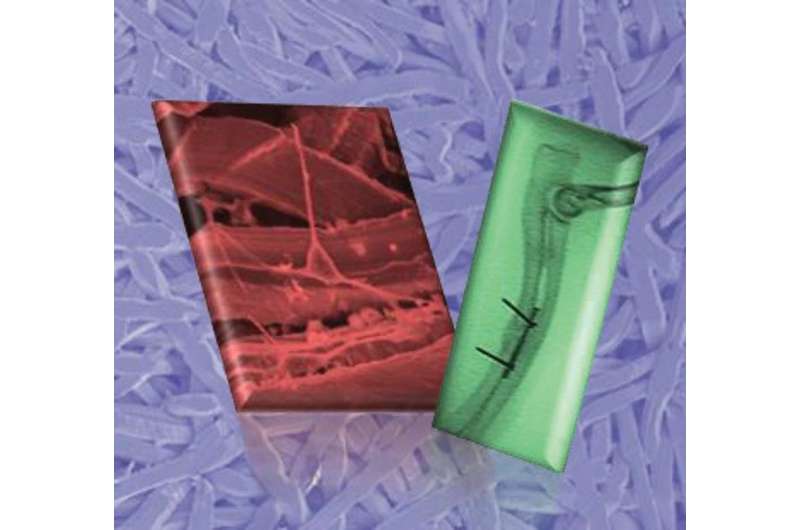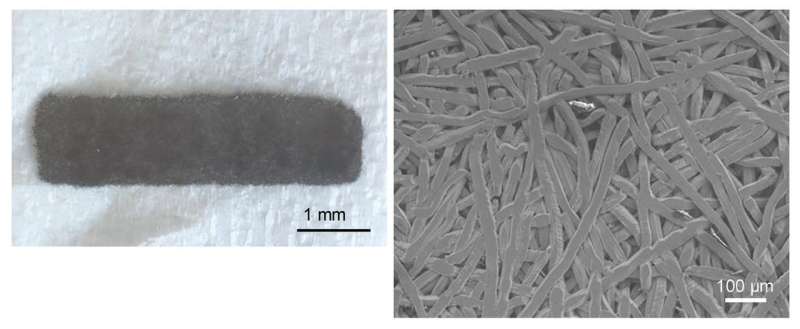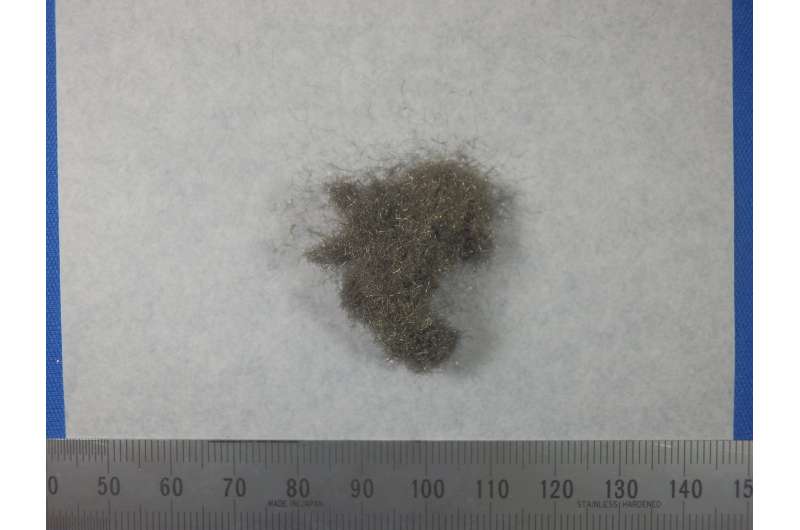Scientists successfully test new, safer titanium plate for bone tissue repair

For the first time, patented titanium fiber plates developed by Japanese engineers for medical use have been tested in an animal model. Researchers from Shinshu University found that, unlike conventional plates, titanium fiber plates do not cause bone embrittlement after close contact with the bone for prolonged periods. This could eliminate the need for plate extraction and the associated surgical risks.
"Our titanium fiber plates, unlike conventional titanium plates, are prepared by compressing titanium fibers at normal room temperature into plates without changing the fiber shape," said Takashi Takizawa, M.D., the paper's first author from the department of orthopaedic surgery at the Shinshu University School of Medicine. "They can compensate for the major drawback of conventional titanium plates, and find application in a range of fixation and bone tissue repair uses at various sites of the body."
Their results were published in the January 25th online issue of the journal Advanced Materials.
Most commonly used to hold bones in place while they heal, titanium plates are erosion resistant and strong enough to hold the mending bones in place. Doctors may elect to implant a titanium plate in a patient with a bad fracture, a severe skull injury, or a degenerative bone disease.

They're not perfect, though. In many cases, titanium plates have to be removed after the healing has finished, as they can cause stress shielding in which the bones become brittle. To correct this problem, Noboru Nakayama, an associate professor of engineering at Japan's Shinshu University developed the titanium fiber plate in 2014. This material offers a myriad of potential clinical uses without the drawbacks of conventional titanium plates.
The titanium fiber plates share a particularly important characteristic with natural bone, according to Takizawa. They both have a nearly identical measurement of stiffness, known as Young's modulus. Conventional plates have a Young's modulus four to 10 times higher than that of bone. The difference in stiffness levels eventually causes bone embrittlement as the bone and plate are in contact.

The team, led by Naoto Saito at Shinshu University, also tested the use of titanium fiber plates in regenerative medicine. Since the shape of the titanium fibers remains unchanged as the plates are prepared at room temperature, a unique porous environment is created throughout the plate.
"We've seen how regenerated bone penetrates into the titanium fiber," Takizawa said. "Various enterprises are interested in titanium fiber plates, and we are going to apply the plates to clinical bone tissue repair. I believe that titanium fiber plates can be permanently placed without removal surgery."
More information: Takashi Takizawa et al, Titanium Fiber Plates for Bone Tissue Repair, Advanced Materials (2017). DOI: 10.1002/adma.201703608
Journal information: Advanced Materials
Provided by Shinshu University





















